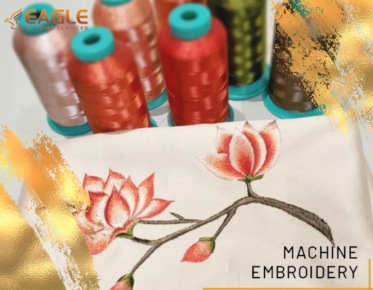Why Machine Embroidery Thread Keeps Breaking
Embroidery is a beautiful art form that combines creativity with precision. However, one of the most common frustrations faced by both novice and experienced embroiderers is the frequent breaking of embroidery thread. This issue can disrupt the flow of work and affect the quality of the final product. Understanding the reasons behind thread breakage and how to prevent it can save time and enhance the embroidery experience.
Common Causes of Thread Breakage
Incorrect Thread Tension
One of the primary reasons for thread breakage is incorrect thread tension. If the tension is too tight, the thread can snap under the pressure. Conversely, if the tension is too loose, it can lead to tangling and knots, which can also cause the thread to break. Adjusting the tension settings on your embroidery machine is crucial for smooth operation.
Poor Quality Thread
The quality of the thread used in embroidery plays a significant role in its durability. Low-quality threads are more prone to fraying and breaking. Investing in high-quality threads can reduce the frequency of breakage and improve the overall quality of your embroidery projects.
Needle Issues
The needle is another critical component in the embroidery process. Using the wrong type or size of needle can lead to thread breakage. It's essential to match the needle size to the thread and fabric being used. Additionally, a dull or damaged needle can cause the thread to snag and break.
Solutions to Prevent Thread Breakage
Regular Maintenance
Regular maintenance of your embroidery machine can prevent many issues, including thread breakage. Cleaning the machine, checking for worn-out parts, and ensuring proper lubrication can keep the machine running smoothly. Regular maintenance also includes checking the thread path for any obstructions or misalignments.
Proper Thread Storage
Storing threads properly can prevent them from becoming brittle or tangled. Keep threads in a cool, dry place, away from direct sunlight. Using thread nets or spools can also help in maintaining the thread's integrity.
Using Quality Digitizing Services
The quality of the digitized design can impact the embroidery process. Poorly digitized designs can lead to excessive thread breakage. Eagle Digitizing offers high-quality digitizing services that ensure smooth sew-outs and minimize thread breakage. Their expertise in the field helps in creating designs that are optimized for machine embroidery.
Choosing the Right Thread and Needle
Selecting the appropriate thread and needle for your project is crucial. For instance, metallic threads require a specific type of needle to prevent breakage. Understanding the compatibility between different threads and needles can significantly reduce the chances of thread snapping.
Understanding Fabric and Design Compatibility
The fabric used in embroidery can also affect thread performance. Some fabrics may require stabilizers to provide the necessary support for the embroidery. Additionally, complex designs with dense stitching can increase the likelihood of thread breakage. Adjusting the design or using a suitable stabilizer can help in managing these challenges.
Future Trends in Embroidery Technology
As technology advances, the embroidery industry is seeing innovations that aim to reduce common issues like thread breakage. From improved machine designs to advanced digitizing software, the future holds promising solutions for embroiderers. Companies like Eagle Digitizing are at the forefront, offering embroidery digitizing services that cater to the evolving needs of the industry.
In conclusion, while thread breakage is a common issue in machine embroidery, understanding its causes and implementing preventive measures can greatly enhance the embroidery experience. By investing in quality materials, maintaining your equipment, and utilizing professional digitizing services, you can achieve beautiful and flawless embroidery results. As the industry continues to evolve, staying informed about new technologies and techniques will be key to overcoming challenges and achieving success in embroidery.


